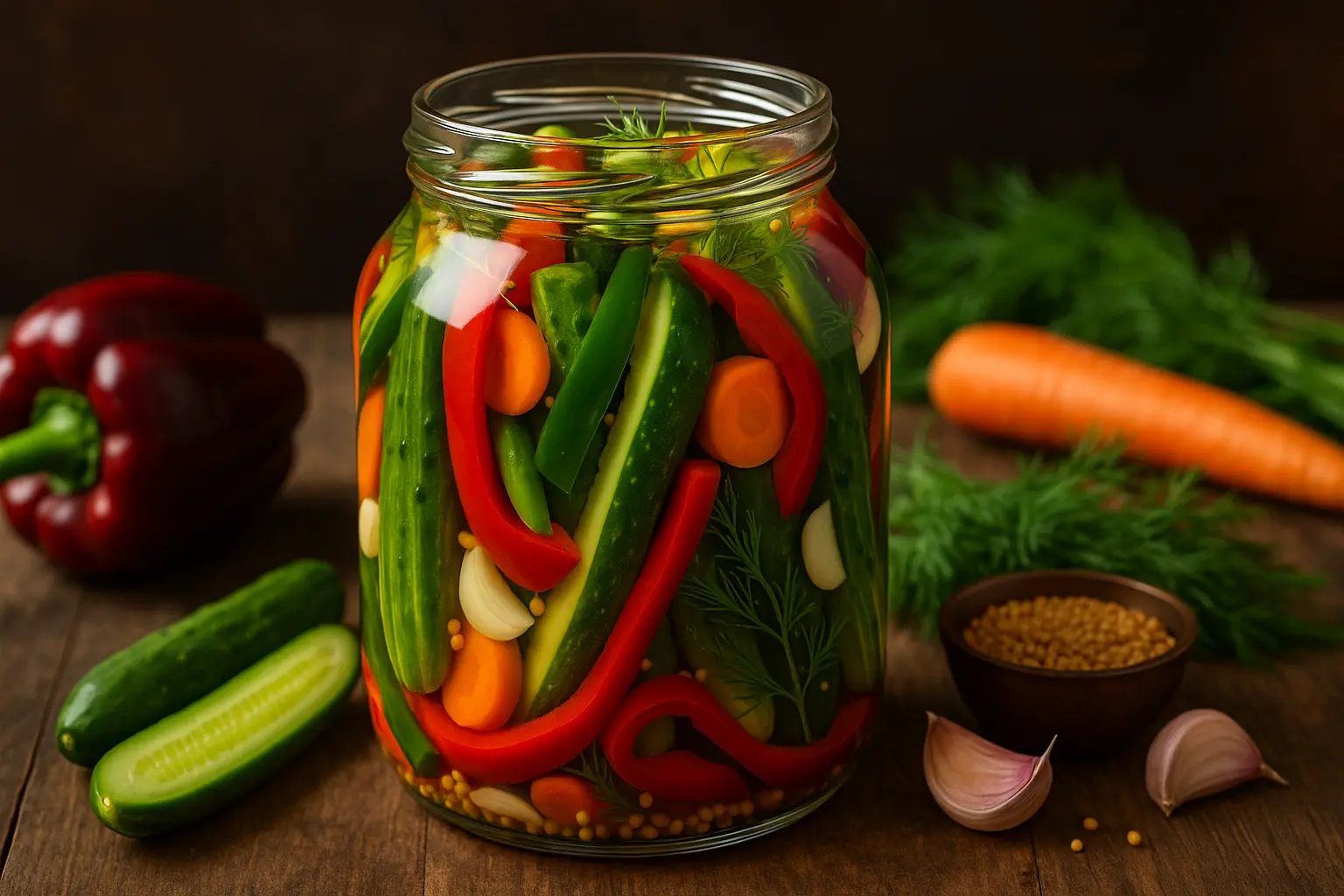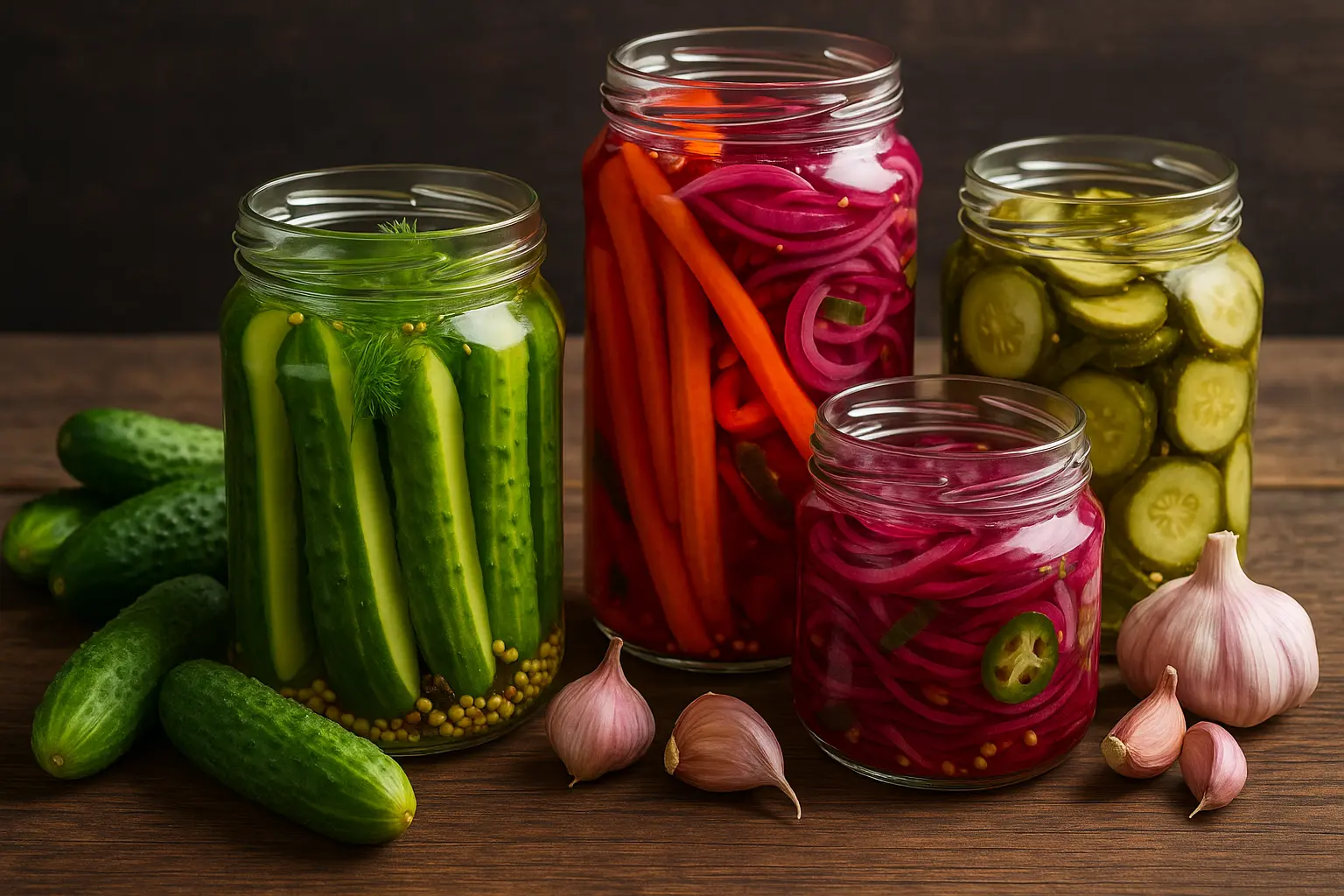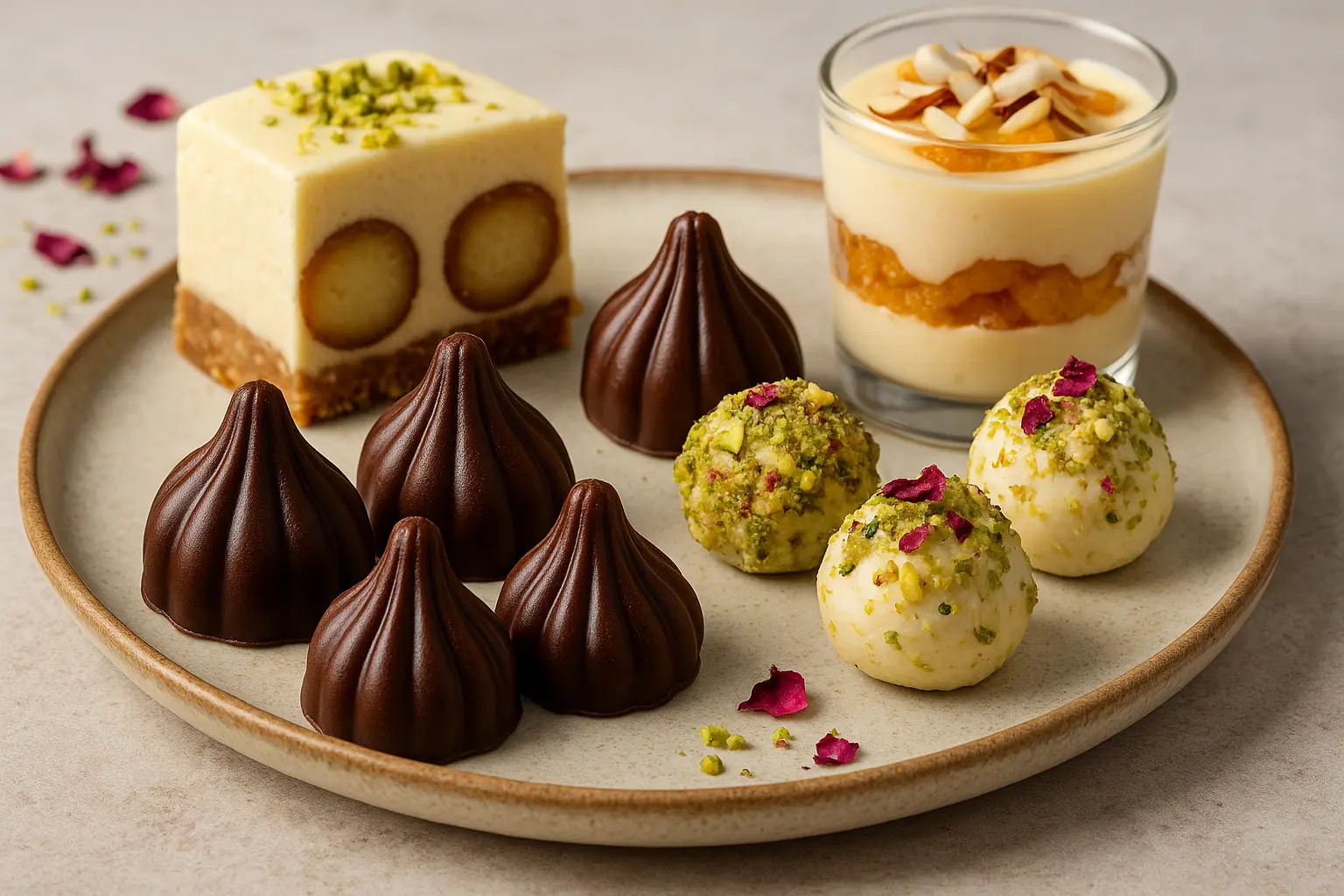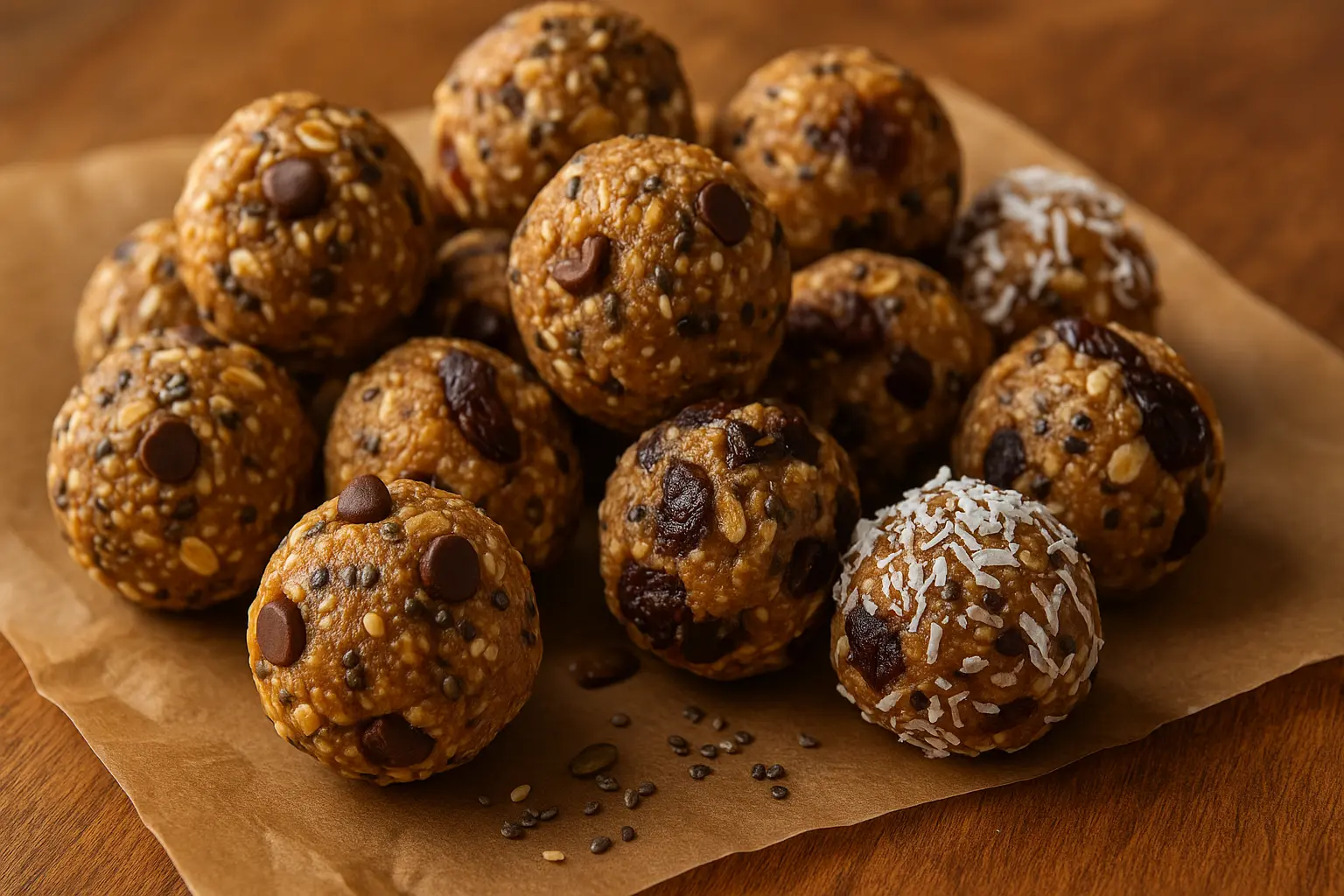Pickles have been a staple in kitchens across the globe for centuries. Whether it’s the tangy crunch of a dill spear alongside a burger, the fiery punch of kimchi with rice, or the sweet-and-sour notes of Indian achar, pickles are more than just preserved vegetables. They’re a culinary art form that transforms simple produce into jars of bold, lasting flavor.
In this guide, we’ll dive deep into the world of pickling—covering the science, techniques, recipes, and international inspirations. By the end, you’ll not only know how to make pickles at home but also how to create variations that are uniquely yours.

Why Pickles? The Allure of Tang and Crunch
Homemade pickles offer much more than store-bought jars:
Freshness: You control the ingredients, ensuring crisp textures.
Flavor Variety: From garlic-dill to chili-mango, the combinations are endless.
Health Benefits: Fermented pickles boost gut health with probiotics.
Sustainability: Pickling reduces food waste by preserving seasonal vegetables.
Pickles are also incredibly versatile. They can be eaten as snacks, toppings, condiments, or even stirred into dishes for flavor complexity.
The Science of Pickling
Pickling works in two main ways:
1. Fermentation Pickling
Uses salt brine to encourage beneficial bacteria (like Lactobacillus) to thrive.
Vegetables release lactic acid naturally, creating tangy flavors.
Examples: sauerkraut, kimchi, kosher dills.
2. Vinegar (Quick) Pickling
Vegetables are soaked in vinegar, salt, sugar, and spices.
Faster than fermentation (ready in hours to days).
Examples: bread-and-butter pickles, pickled onions.
Both methods are delicious; the choice depends on whether you want probiotic benefits or quick results.
Essential Tools and Ingredients
Tools
Glass jars with tight lids (Mason jars are ideal)
Saucepan for heating brine
Measuring cups/spoons
Fermentation weights (optional, for lacto-fermentation)
Core Ingredients
Vegetables/Fruits: cucumbers, carrots, radishes, onions, mangoes, cabbage.
Acid/Base: vinegar (apple cider, white, rice) or salt brine.
Flavoring Agents: garlic, dill, mustard seeds, chili flakes, ginger, turmeric, bay leaves.
Sweeteners (optional): sugar, honey, jaggery.
Step-by-Step: Classic Dill Pickles
Here’s a foundational recipe to get you started.
Ingredients:
6–8 small cucumbers (kirby cucumbers are best)
3 cups water
1 cup vinegar (white or apple cider)
2 tbsp salt
1 tbsp sugar (optional)
4 garlic cloves, smashed
2 tsp dill seeds (or fresh dill sprigs)
1 tsp peppercorns
Pinch of chili flakes (optional)
Instructions:
Wash and slice cucumbers (spears or coins).
Heat water, vinegar, salt, and sugar until dissolved. Cool slightly.
Pack cucumbers, garlic, dill, and spices tightly into jars.
Pour brine over cucumbers until fully submerged.
Seal jars and refrigerate for at least 24 hours. Flavor improves after 3–4 days.
Global Pickling Traditions
1. Korean Kimchi
Napa cabbage, radish, garlic, ginger, chili flakes, and fish sauce (vegan version uses soy sauce).
Fermented for 3–7 days.
Tangy, spicy, umami-rich.
2. Indian Mango Achar
Raw mangoes, mustard oil, fenugreek seeds, turmeric, chili powder.
Sun-fermented for weeks.
Bold, fiery, and deeply aromatic.
3. Japanese Tsukemono
Quick pickles of cucumbers, daikon, or eggplant.
Uses rice vinegar, mirin, kombu.
Served as palate cleansers with rice.
4. German Sauerkraut
Cabbage + salt, left to ferment naturally.
Sour, probiotic-rich, used in sandwiches and sausages.
5. Middle Eastern Pickles (Turshi)
Mixed vegetables: turnips, carrots, cauliflower.
Brined with vinegar and spices like coriander and cumin.
Creative Flavor Twists
Don’t stop at traditional recipes—experiment with bold pairings.
Spicy Sriracha Pickles: add 2 tbsp sriracha to brine.
Garlic-Dill with Lemon Zest: bright and aromatic.
Sweet & Spicy Carrots: honey + chili flakes.
Pickled Red Onions with Jalapeño: perfect for tacos.
Beetroot Pickles with Cloves: earthy and fragrant.
Tips for Perfect Pickles
Fresh Produce Only: Old veggies turn mushy.
Use Non-Iodized Salt: Iodine can inhibit fermentation.
Sterilize Jars: Prevents mold and spoilage.
Keep Veggies Submerged: Use weights if fermenting.
Patience Matters: Flavors deepen over time.
Health Benefits of Pickles
Fermented Pickles: Improve gut microbiome, aid digestion, and boost immunity.
Vinegar Pickles: Lower blood sugar spikes, provide antioxidants.
Low-Calorie Snack: Crunchy satisfaction without guilt.
Mineral Rich: Especially calcium and potassium from brined vegetables.
(Tip: Choose low-salt recipes if monitoring sodium intake.)
Troubleshooting Common Issues
Cloudy Brine: Normal in fermentation; a sign of active bacteria.
Slimy Texture: Caused by too much salt or spoilage—discard.
Soft Pickles: Ensure cucumbers are fresh; add grape leaves or tannins to keep crisp.
Mold on Surface: Skim off; ensure veggies are submerged.
Pickles Beyond the Jar
Pickles aren’t just for snacking—they’re culinary game changers.
Sandwiches & Burgers: Classic dill spears add crunch.
Salads: Pickled onions brighten flavors.
Curries: Indian achar adds spice depth.
Charcuterie Boards: Contrast rich cheeses and meats.
Cocktails: Pickle juice in Bloody Marys or Picklebacks.
Pickling as a Lifestyle
Many home cooks find pickling a therapeutic hobby. It connects you to seasonal eating, reduces waste, and adds a creative dimension to everyday meals. Sharing homemade jars with friends and family can also become a cherished tradition.
Conclusion: Craft Your Bold Flavors
Pickling is more than preservation—it’s about discovery. With just a handful of ingredients and some patience, you can create jars that capture the bold flavors of every cuisine and season. From fiery Indian pickles to refreshing cucumber dills, there’s a world of tang waiting in your kitchen.
So next time you see cucumbers, mangoes, or even beets at the market, don’t just think salad—think pickle jar.
Leave a comment
Your email address will not be published. Required fields are marked *




















